UPDATE 2/6/14 9:26 PM: Here is an English translation of the below Arabic statement:

Click the following link for a safe PDF copy: Jamā’at Anṣār Bayt al-Maqdis — “Declaration of Responsibility For Targeting the City of Eilat With a Rocket Attack” (En)
__________
—
Click the following link for a safe PDF copy: Jamā’at Anṣār Bayt al-Maqdis — “Declaration of Responsibility For Targeting the City of Eilat With a Rocket Attack”
_________
Month: January 2014
Fursān al-Balāgh Media presents a new issue of the magazine: “al-Balāgh Magazine #10"

Click the following link for a safe PDF copy: al-Balāgh Magazine #10
__________
To inquire about a translation for this magazine issue for a fee email: [email protected]
New statement from Ajnād Miṣr: "Operation Targeting the Central Security Forces With Two IEDs"
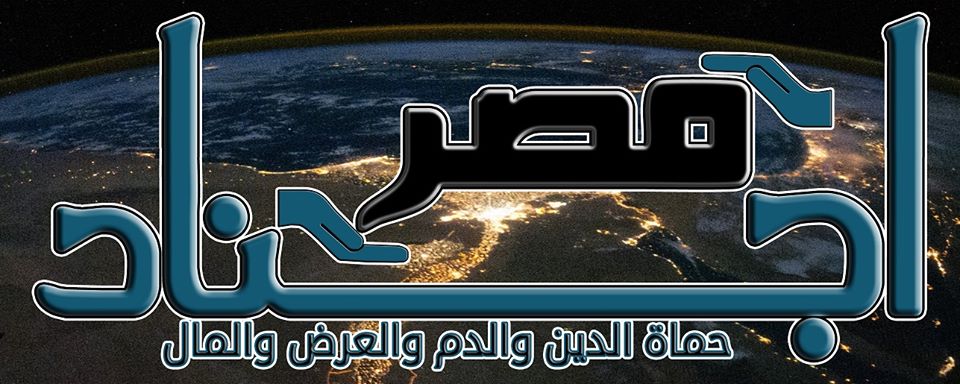
Click the following link for a safe PDF copy: Ajnād Miṣr — “Operation Targeting the Central Security Forces With Two IEDs”
___________
To inquire about a translation for this statement for a fee email: [email protected]
al-Furqān Media presents a new video message from the Islamic State of Iraq and al-Shām: “Messages from the Land of Epic Battles #17"
UPDATE 2/3/14 8:15 AM: Here is an Arabic transcription of the below video message:

Click the following link for a safe PDF copy: Islamic State of Iraq and al-Shām — “Messages from the Land of Epic Battles #17″ (Ar)
__________
—
NOTE: For prior parts in this series see: #16, #15, #14, #13, #12, #11, #10, #9, #8, #7, #6, #5, #4, #3, #2, and #1.
—
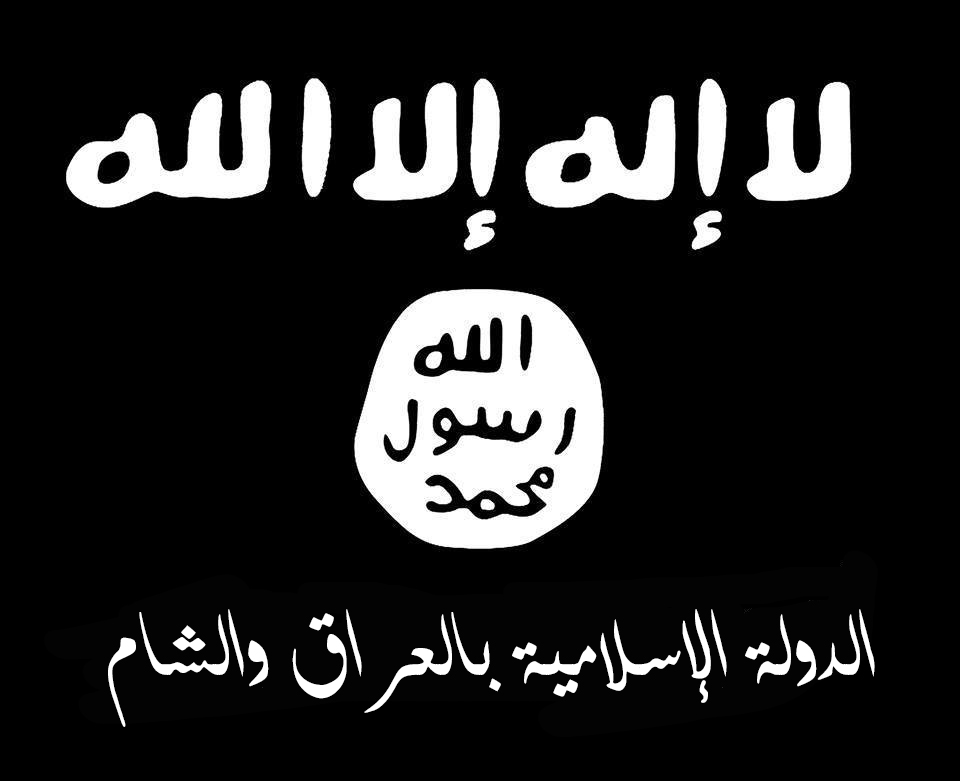
__________
To inquire about a translation for this video message for a fee email: [email protected]
Ajnād Foundation For Media Production presents a new Nashīd from the Islamic State of Iraq and al-Shām: "Sharp in My Struggle"

Islamic State of Iraq and al-Shām- “Sharp in My Struggle”
_________
To inquire about a translation for this nashīd for a fee email: [email protected]
New video message from Himam News Agency: “Report 55: A Tour of Jabhat al-Nuṣrah's Intensive Sharī'ah Institute – Dayr al-Zūr"
NOTE: For previous parts in this video series see: #54, #53, #52, #51, #50, #49, #48, #47, #46, #45, #44, #43, #42, #41, #40, #39, #38, #37, #36, #35, #34, #33, #32, #31, #30, #29, #28, #27, #26, #25, #24, #23, #22, #21, #20, #19, #18, #17, #16, #15, #14, #13, #12, #11, #10, #9, #8, #7, #6, #5, #4, #3, #2, and #1.
—
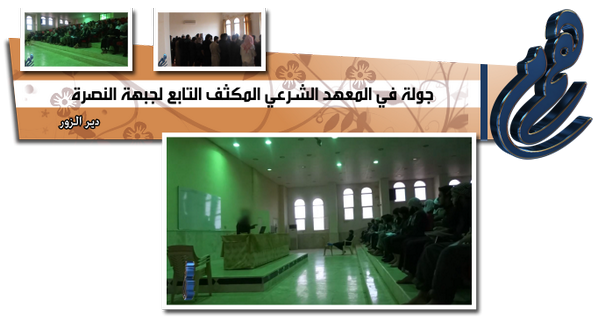
__________
To inquire about a translation for this video message for a fee email: [email protected]
Check out my new piece co-authored with Phillip Smyth at Foreign Policy's Middle East Channel: " The Vocabulary of Sectarianism"

As the conflict in Syria continues to spread throughout the Levant and adopt a broader sectarian tone — Sunni Salafis on one side and Iranian-backed, ideologically influenced Shiite Islamists on the other — it is important to know how the main actors have cast one another. Unlike the rhetoric during the Iraq War (2003), sectarian language on both sides is regularly finding its way into common discourse. Fighting between Sunnis and Shiites has picked back up in Iraq, is slowly escalating in Lebanon, and there have been incidents in Australia, Azerbaijan, Britain, and Egypt.
The utilization of these words in militant and clerical lingo reflects a broader and far more portentous shift: A developing sectarian war and strategy of dehumanization. This is not simply a representation of petty tribal hatreds or a simple reflection on Syria’s war, but a grander regional and religious issue. If language serves as a guide to how a conflict will develop and how participants view it, a number of key terms must be understood.
Sunni Islamists, particularly Salafis, have used six main terms to describe those that support, are on the side of, or are fighting with the Assad regime: Nusayri, rafidha, majus, Safawi, Hizb al-Lat, and Hizb al-Shaytan. Their Shiite Islamist foes have also adopted their own titles for their Sunni opponents, some of the main terms include: Nasabi, Takfiri, Ummayad, and Wahhabi. For both sides, these terms serve to paint their enemies as nothing more than infidels bent on destroying Islam. Consequently, there can only be one punishment: Death.
Click here to read the read the rest.
New video message from Himam News Agency: “Report 54: Aspects of the Work of al-Idārah al 'Āmah Li-l-Khidmāt a Subsidiary of Jabhah al-Nuṣrah – Aleppo"
NOTE: For previous parts in this video series see: #53, #52, #51, #50, #49, #48, #47, #46, #45, #44, #43, #42, #41, #40, #39, #38, #37, #36, #35, #34, #33, #32, #31, #30, #29, #28, #27, #26, #25, #24, #23, #22, #21, #20, #19, #18, #17, #16, #15, #14, #13, #12, #11, #10, #9, #8, #7, #6, #5, #4, #3, #2, and #1.
—
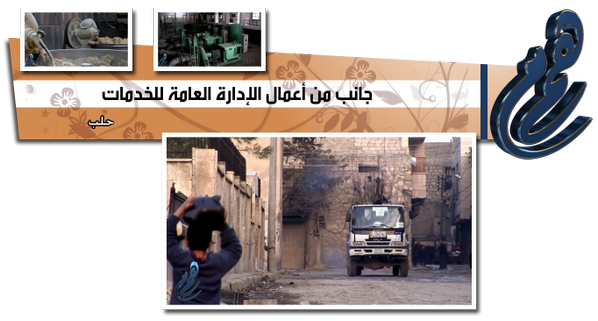
_________
To inquire about a translation for this video message for a fee email: [email protected]
Musings of an Iraqi Brasenostril on Jihad: "They have closed ranks and pledged bay'ah to Baghdadi": Nasheed for the Islamic State of Iraq and ash-Sham
NOTE: An archive of the Musings of an Iraqi Brasenostril on Jihad column can be found here.
–
“They have closed ranks and pledged bay’ah to Baghdadi”: Nasheed for the Islamic State of Iraq and ash-Sham
By Aymenn Jawad Al-Tamimi
Preface
This is an Islamic State of Iraq and ash-Sham nasheed released earlier in 2013 (around September time) and translated by me below. The term bay’ah means a pledge of allegiance, and in this case it is to ISIS’ leader Sheikh Baghdadi: a fundamental aspect of joining ISIS, not requiring a bay’ah to Sheikh Zawahiri of al-Qa’ida Central (see my previous Jihadology post for more information).
On the other hand, pledging allegiance to Sheikh Zawahiri, according to the testimony related to me by a representative of the Katiba Mus’ab bin Umair- a Deraa-based battalion that recently pledged allegiance to Jabhat al-Nusra- is a key part of properly integrating into Jabhat al-Nusra, Syria’s official al-Qa’ida affiliate that has emphasized its loyalty to al-Qa’ida Central by calling itself “Tanzim al-Qa’ida fi Bilad ash-Sham.”
Contrasting with this point, a representative of Jabhat al-Nusra in Qalamoun, which vowed to protect members of ISIS on the grounds of having the same manhaj (ideological program: i.e. Caliphate and world domination) even as the “politics” differ, affirmed to me that the political difference between Jabhat al-Nusra and ISIS is that the latter has no bay’ah to Sheikh Zawahiri.
This point is corroborated by some more testimony I recently gathered from members and supporters of ISIS. Thus, one native Syrian member of ISIS from Aleppo denied to me the existence of an ISIS bay’ah to al-Qa’ida central and affirmed to me that the original al-Qa’ida in Iraq had pledged bay’ah to and thus was absorbed by the Islamic State. Prominent ISIS source and supporter who used the Twitter handle zhoof (who is notably anti-Jabhat al-Nusra, deridingly referring to it on occasion as the “Jowlani Front”) elaborated to me further on whether ISIS has bay’ah to Sheikh Zawahiri:
“Zawahiri is a soldier with Mullah Omar, so if there is a bay’ah [from ISIS to al-Qa’ida Central], it will be to Mullah Omar, but all that there is of bay’ah is on Nusra which Sheikh Baghdadi established for Zawahiri, but every word Baghdadi utters is as though he is under bay’ah to Zawahiri as his sheikh, and this is from the discipline and humility of the sheikh [Baghdadi].”
In objection to these points, it is argued that if ISIS were really independent of al-Qa’ida Central, why does Sheikh Baghdadi not simply say so explicitly? Indeed, he has made no explicit declaration of a break, but I would argue that this is so because it would simply stir up too much fitna in the global jihadist movement. After all, Sheikh Baghdadi understands that al-Qa’ida Central is ultimately working towards the same ideological goals, so why bother deepening an already serious disagreement?
In short, as Will McCants says, Sheikh Baghdadi is playing a “clever game.” I would also agree with McCants about being skeptical of ISIS supporters’ and members’ narrative of the independence of the Islamic State from al-Qa’ida Central from the very beginning with its founding in late 2006, for there is no doubt that al-Qa’ida in Iraq was initially the main component of the Islamic State.
In any case, the lack of an explicit leadership declaration of independence does not mean there is no independence. On this reasoning, one could argue that the Green Battalion- a muhajireen battalion founded by Saudis last summer and primarily operating in Damascus province- is not an independent group. However, all reliable testimony on the ground (e.g. my interview with the Jabhat al-Nusra in Qalamoun representative) points to its independence.
Though it shares the ideology of ISIS and Jabhat al-Nusra, the Green Battalion is independent for “personal reasons”: that is, its founders and leaders had personal problems with ISIS and Jabhat al-Nusra in that they preferred not to take sides in the dispute over Sheikh Baghdadi’s announcement of a merger. Of course, it is not advantageous to anyone to declare explicitly a break of this sort.
Translation of the Nasheed
“They have closed ranks and pledged bay’ah to Baghdadi,
For [he is] our amir in our Iraq and ash-Sham.
For the Caliphate of God: I am its sign,*
Its glory decreed by our blood.
They have promised each other to protect its [the Caliphate’s] corners,
They have sold life at a cheap price for its survival.
They have closed ranks and pledged bay’ah to Baghdadi,
For [he is] our amir in our Iraq and ash-Sham.
They have undertaken bay’ah together to our amir,
They are your heroic knights and our weapon.
For he [Baghdadi] is the one to whom bay’ah is pledged in our land of Iraq
And [he is] the amir of the Muslims and of our land of Sham.
They have closed ranks and pledged bay’ah to Baghdadi,
For [he is] our amir in our Iraq and ash-Sham.
Preserve the soldiers of God, oh custodian of ours.
The cross has returned to our land and our abodes.
And on our skulls will be our life,
Laying low and vanquishing oppression, our enemy.
They have closed ranks and pledged bay’ah to Baghdadi,
For [he is] our amir in our Iraq and ash-Sham.
We have not forgotten the incident of the throwers,**
Verily it is an excellent lesson for whomsoever after it,
When some of the throwers resisted our Prophet,
For grace remains on our heroes [?].***
They have closed ranks and pledged bay’ah to Baghdadi,
For [he is] our amir in our Iraq and ash-Sham.”
Further Notes
* cf.My previous post for Jihadology in which I discuss ISIS discourses focus on establishing the Caliphate.
**- cf. This video lecture by Yahya Abd al-Rahman.
**- I am slightly uncertain about this phrase. Alternative suggestions are welcome.
GUEST POST: Ahrar al-Sham versus Ahrar al-Sham: The band and the militia
NOTE: As with all guest posts, the opinions expressed below are those of the guest author and they do not necessarily represent the views of this blogs administrator and does not at all represent his employer at the Washington Institute for Near East Policy.
Jihadology.net aims to not only provide primary sources for researchers and occasional analysis of them, but also to allow other young and upcoming students as well as established academics or policy wonks to contribute original analysis on issues related to jihadism. If you would like to contribute a piece, please email your idea/post to azelin [at] jihadology [dot] net.
Click here to see an archive of all guest posts.
—
Ahrar al-Sham versus Ahrar al-Sham: The band and the militia
By Joel D. Parker
Ahrar al-Sham, a Salafi militia that emerged in late 2011, now coordinates with the Islamic Front (IF), and has attained a large and relatively well-funded forces considered to be among the single strongest militias on the side of the opposition.[1] Interestingly, Ahrar al-Sham, meaning “Free men of the Levant,” shares its name with a music group that is rooted in the popular protest movement and linked to the Free Syrian Army (FSA), and has dozens of music videos available online. While a militia and a band cannot be compared directly, the videos of Ahrar al-Sham the militia often do contain songs either in the background or as a dominant part of their message. I would like to thus compare the imagery and musical styles used by Ahrar al-Sham the band and the militia respectively, as a tool to explore possible similarities and differences within the ideologies of the dominant factions of the armed opposition.
 [2]
[2]
The band Ahrar al-Sham has recorded a number of highly-viewed anthems (anashid) since the outbreak of the uprising in March 2011, such as “Our God is God” (Ilna Allah) and “It’s not Allowed” (haram aleyh) generally sung in a cappella style out of difference to Salafi interpretations of Islamic laws.[3] However, they are decidedly not related to the militia Ahrar al-Sham, and in fact do not refer to Ahrar al-Sham the militia in their songs, rather only to the Free Syrian Army. They use the colloquial Levantine dialect declare the imminent fall of the Baʿth Party—lyrics that seem superfluous in the Islamist or Salafi context where shariʿa law tends to trump political pluralism.[4]
Ahrar al-Sham, the militia, employs a different genre of anashid, typically derived from sources predating the Syrian uprising, using only classical Arabic, and often reusing hymns recorded over the past two or three decades by singers from the Gulf States.[5] While a cappella hymns are allowed (especially to raise moral in battle), according to strict Salafi interpretations of Islamic jurisprudence, most popular singing and musical accompaniment is forbidden to the listener and musician alike.[6]
A clear division between the musical styles of the band and the militia comes to light in the differing lyrics on subjects of nationalism, territory, identity, and vision for the future. Ahrar al-Sham the band is adamant about its loyalty to Syria the country in its repeated usage of the original slogans heard on the streets in the early days of the peaceful uprising when a common motif was the slogan “Allah, Suriya, Hurriya wa Bas.” The militia does refer to Syria, but generally prefers metaphors such as “Grandsons of Umar” to refer to their broader Sunni heritage.
One of the most emotive songs of the band is “Y’allah Nihtif Sawa” (Come, let’s lift our voices together). It refers to Hama and Homs in particular, and the last verse of the song is taken from a song from the 1950s, “Skaba Ya Damuʿ al-ʿAyn” (Oh, Tears Flow).[7] The band Ahrar al-Sham’s usage of this refrain indicated the sadness of lost loved ones, and its usage became so common in the first year of the Syrian uprising that a satirical music video was made, showing Bashar singing it and crying.[8] As opposed to the pan-Islamic message of the Islamist anashid of the militia, Ahrar al-Sham the band refers only to Syria, and even appeals to “Arabs,” not Muslims in general, to join their fight against the regime of the Syrian “traitor.”
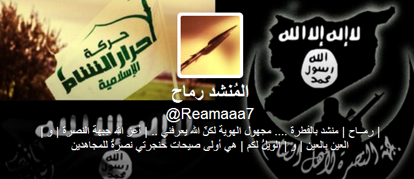 [9]
[9]
Recently, the militia Ahrar al-Sham has begun to employ newly composed hymns in their propaganda, such as “Al-Wayl La-Kum” (A scourge on you!), which declares a curse on their enemies and a blessing on their fighters, the army of Muhammad.[10] Despite its Syrian Arabic accent (in strict literary Arabic), the Saudi-style reverb effect in the hymn alludes to Wahhabi styles of Qurʾanic recital that became popular in the 1980s.[11] The driving force of the song, which is performed by a singe who has also dedicated songs to al-Nusra Front and the Islamic State of Iraq and al-Sham, is the global jihadi momentum that appeals to individual Muslims to unite under one banner and join in the struggle against heretics, unbelievers, and “Hizb al-Lat”—a play on the Lebanese Shiʿa militia, Hezbollah, whose name means Party of God.[12]”
An overlap in the culture of both Ahrar al-Sham the band and the militia can be heard in the words of some anthems that resonate throughout the insurgency. For instance, a music video has been uploaded showing Syrian young boys singing the hymn “Allahu Akbar, ḥayya ʿala al-jihad” (God is greater, Come to Jihad!) with guns in their hands.[13] The boys call for jihad and, at the same time, use rhetoric derived from the Arab nationalist tradition that demands to know, “Where are the Arabs?” The call to jihad is a common theme today in the midst of the war against the regime, and indeed one hymn, “Jahizuna” (You Prepared Us) has been used in the videos of Ahrar al-Sham the militia as well as a number of other jihadist groups. It was recorded about a decade ago in Riyadh, Saudi Arabia, and its influence across militia groups reflects the cultural and political strength of Gulf States on the Syrian conflict.[14]
In the wider sphere that produced the anashid of both Ahrar al-Sham the militia and Ahrar al-Sham the band, certain shared themes are derived from contemporary Islamist culture and its Gulf-oriented posture. The main difference then is that the FSA-linked music group directs its message towards the Arab Sunnis of Syria fighting against Asad, while the Salafi militia of the IF targets its message towards the wider Sunni world, where many view the current struggle in broader geopolitical terms.
